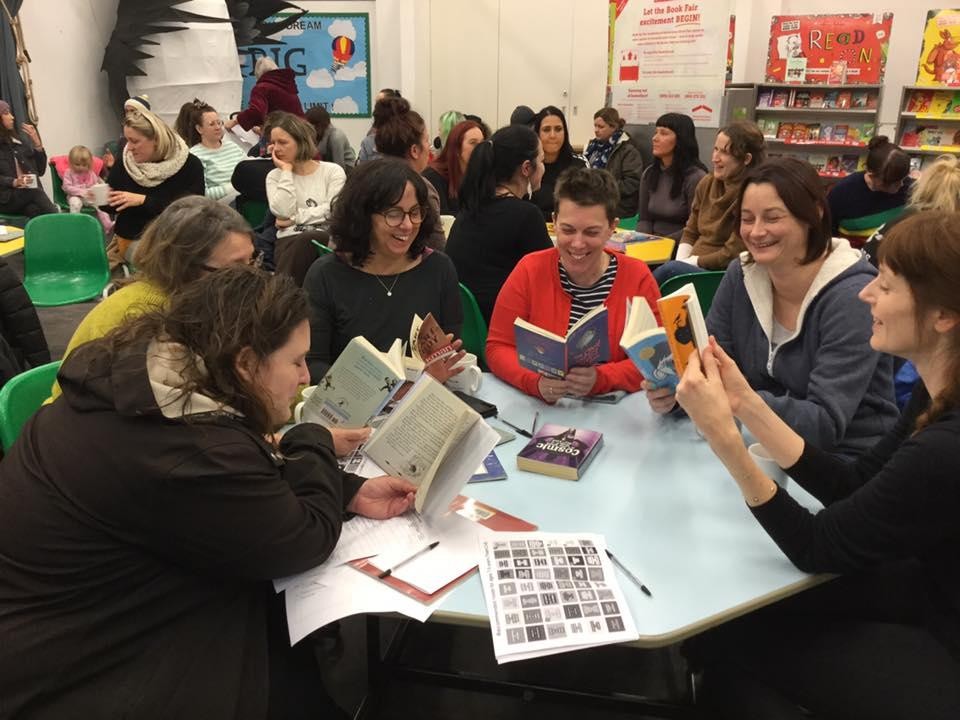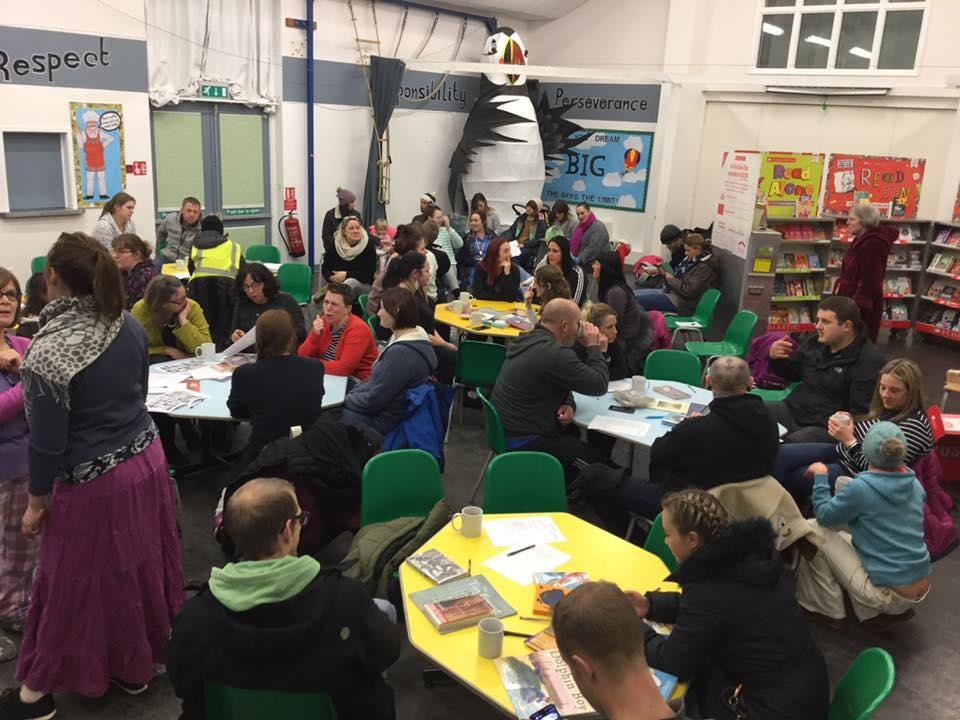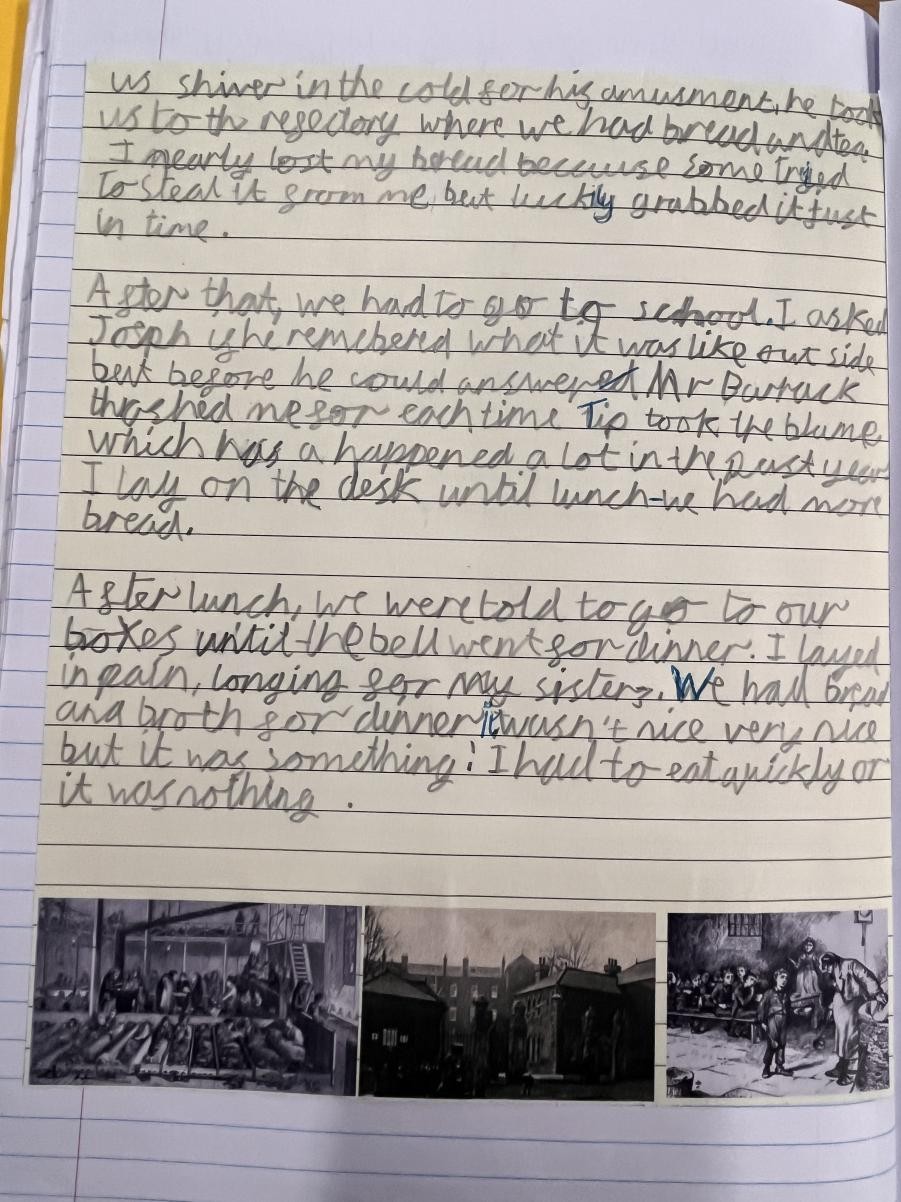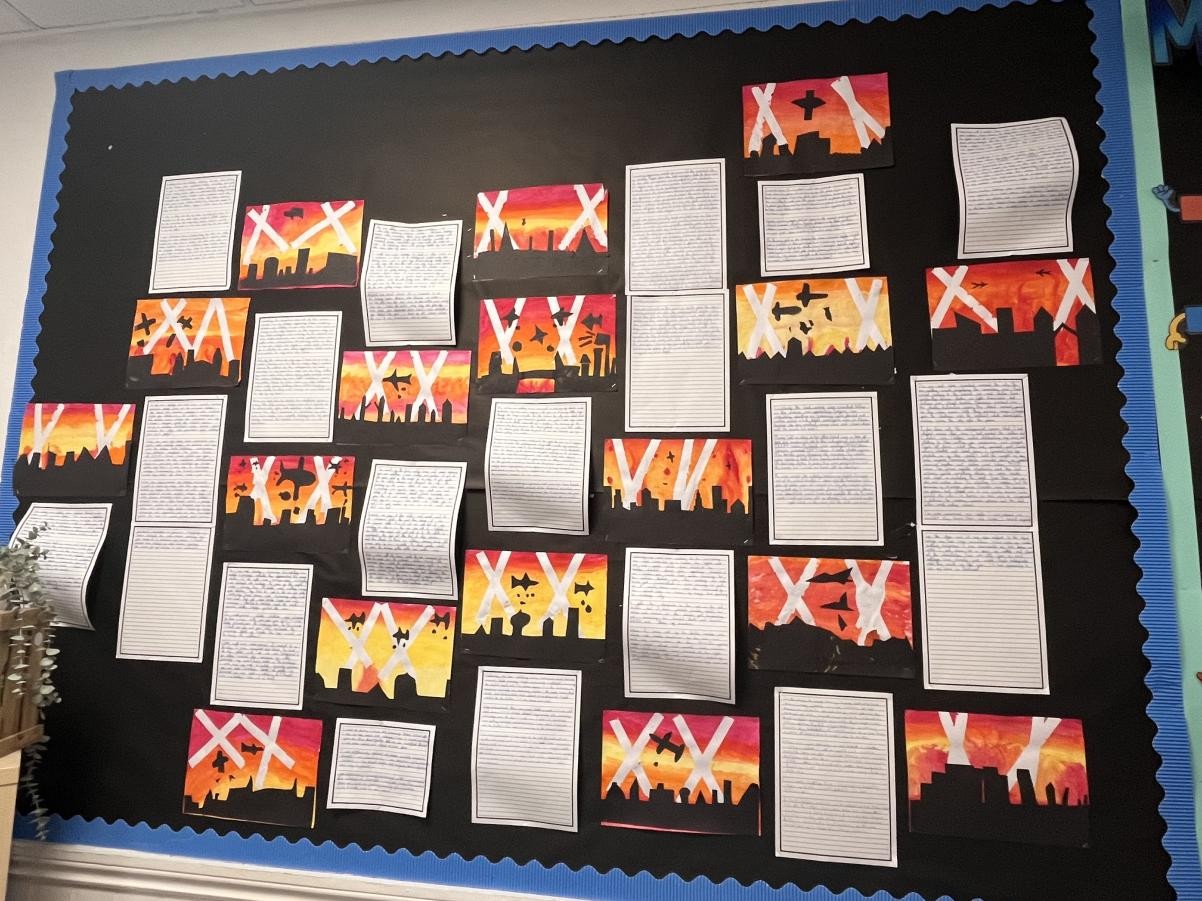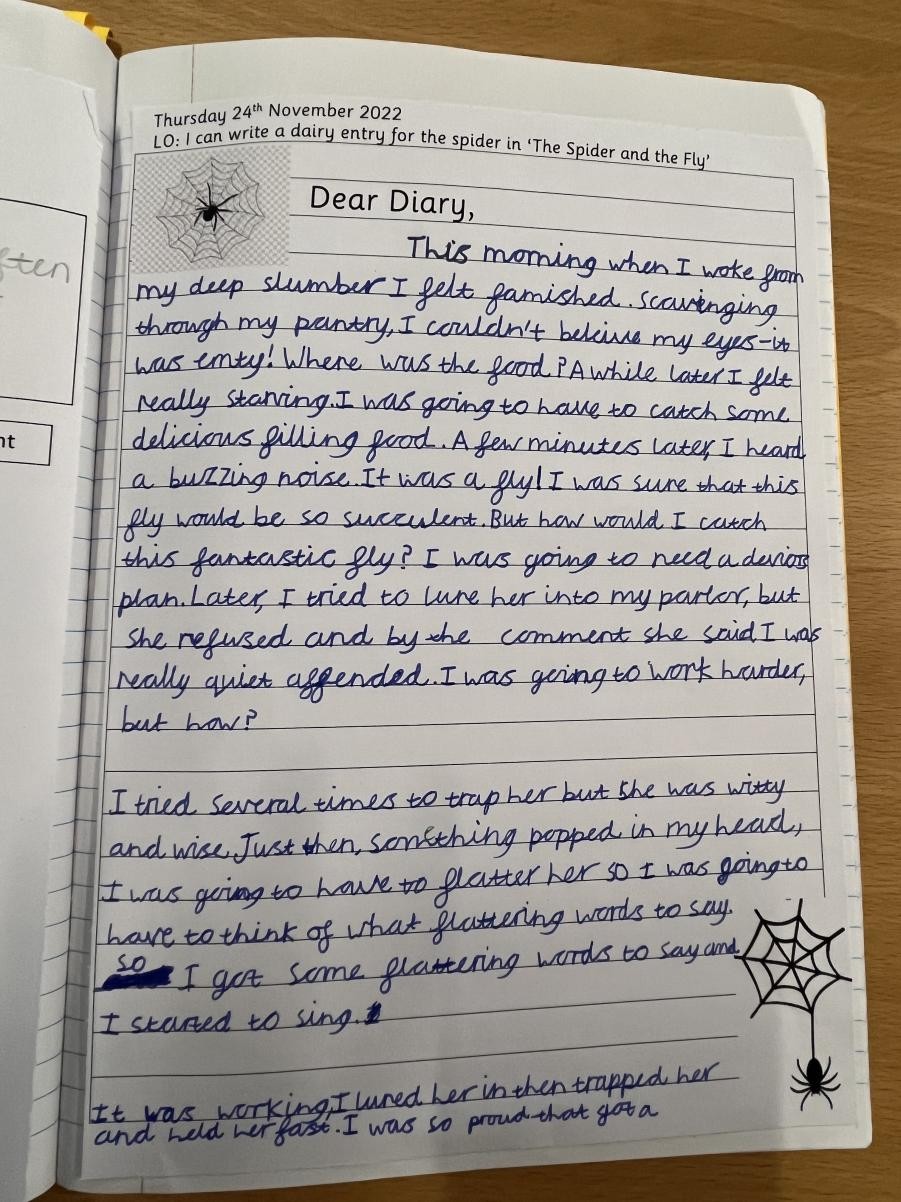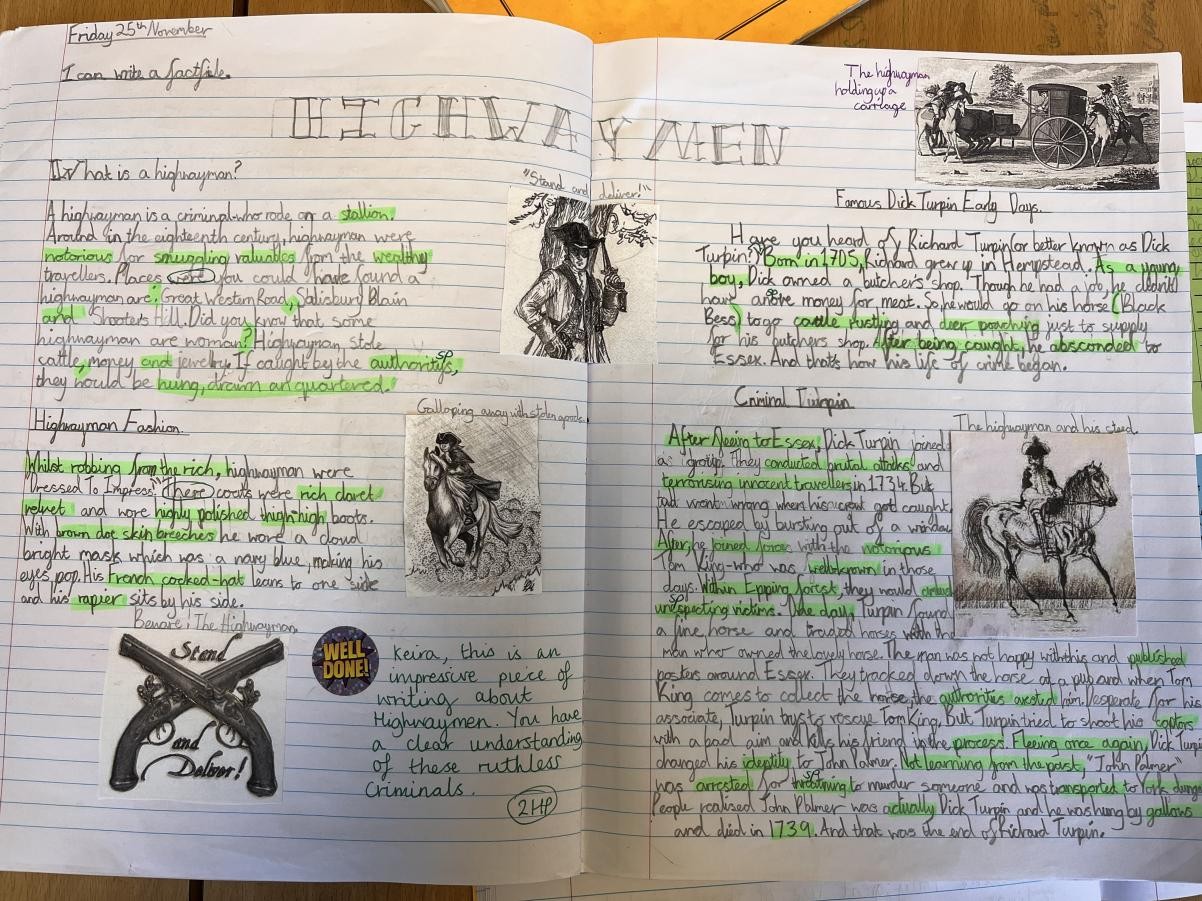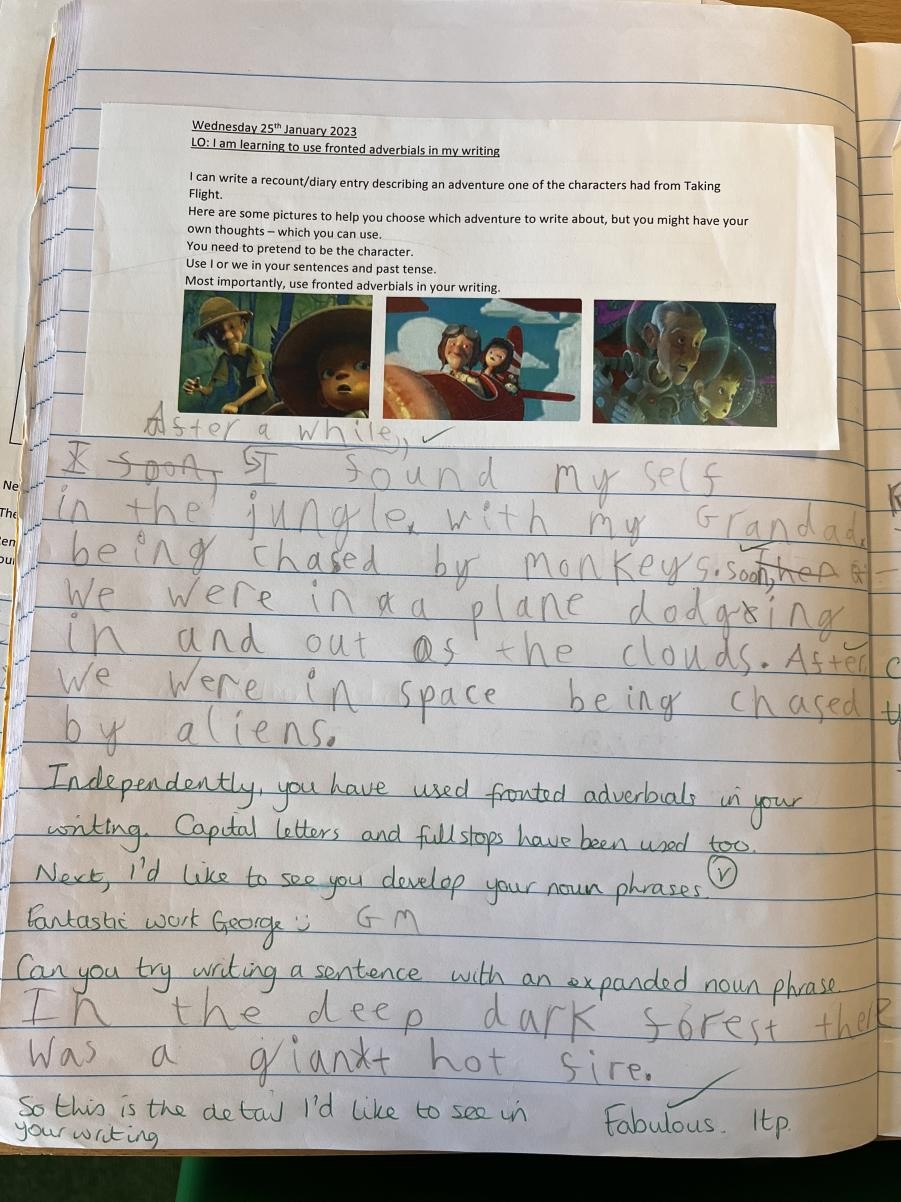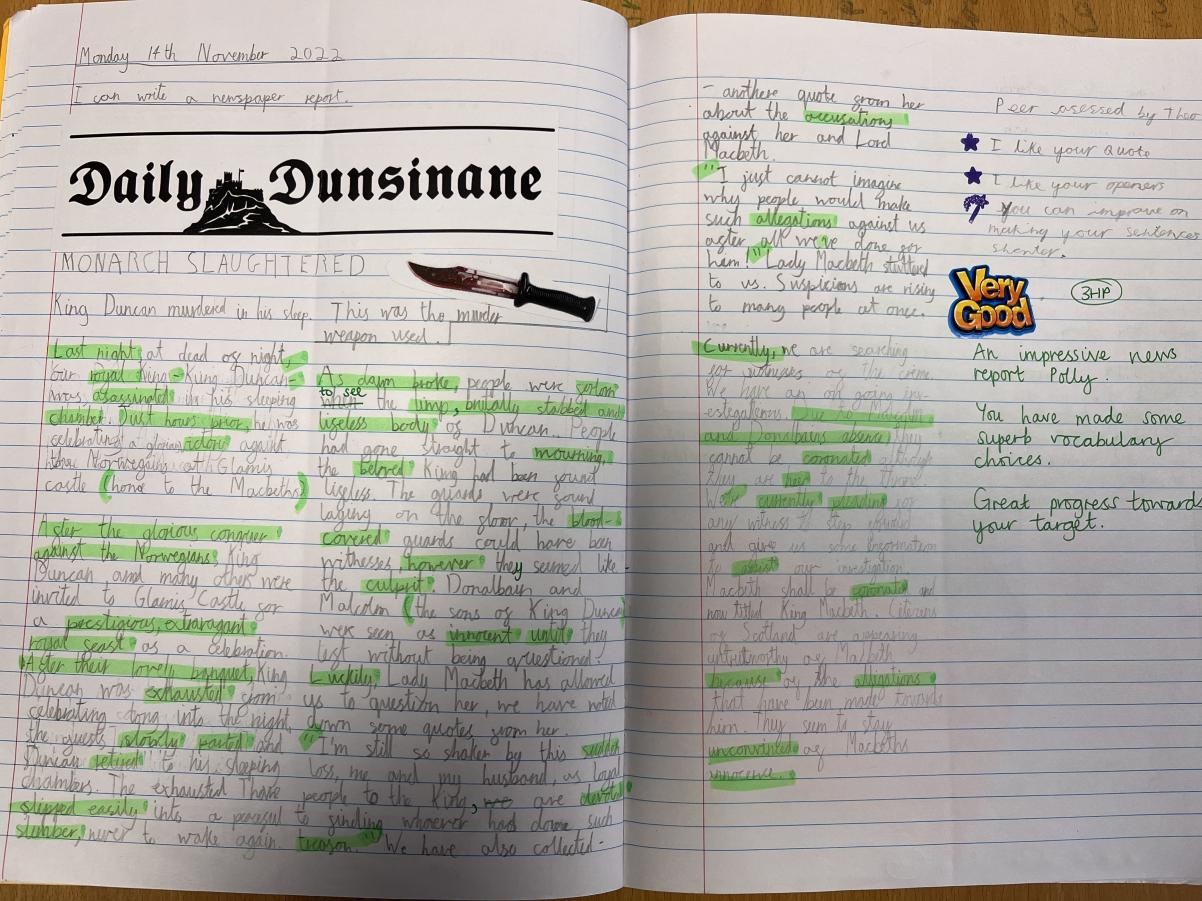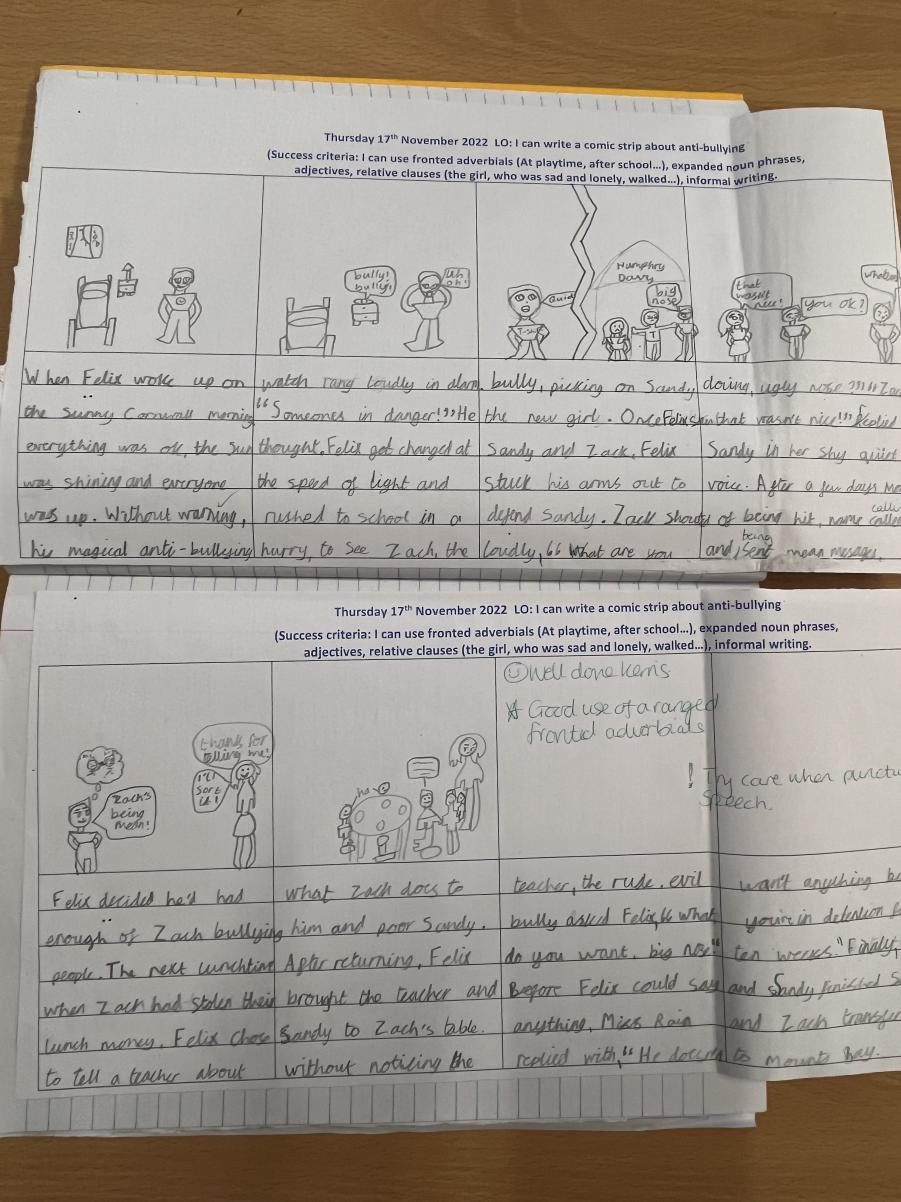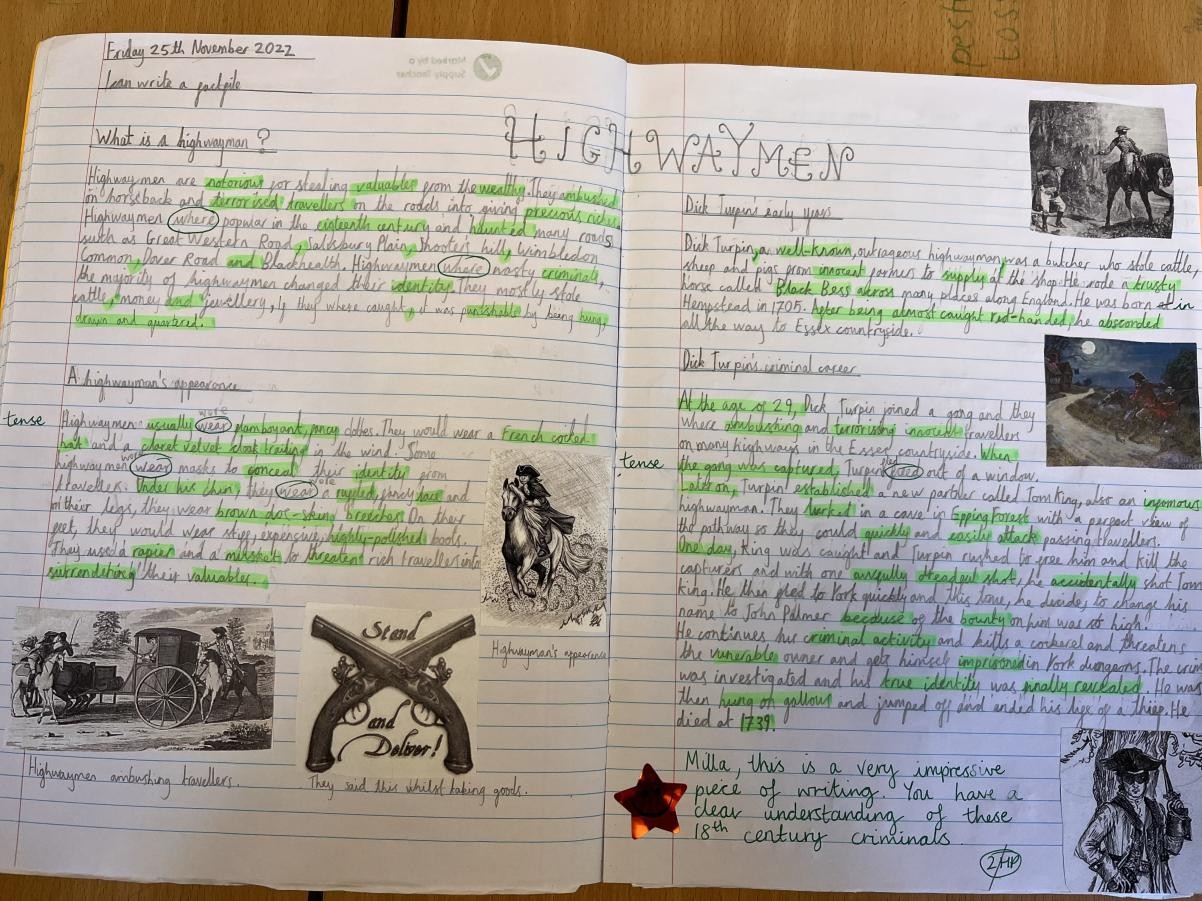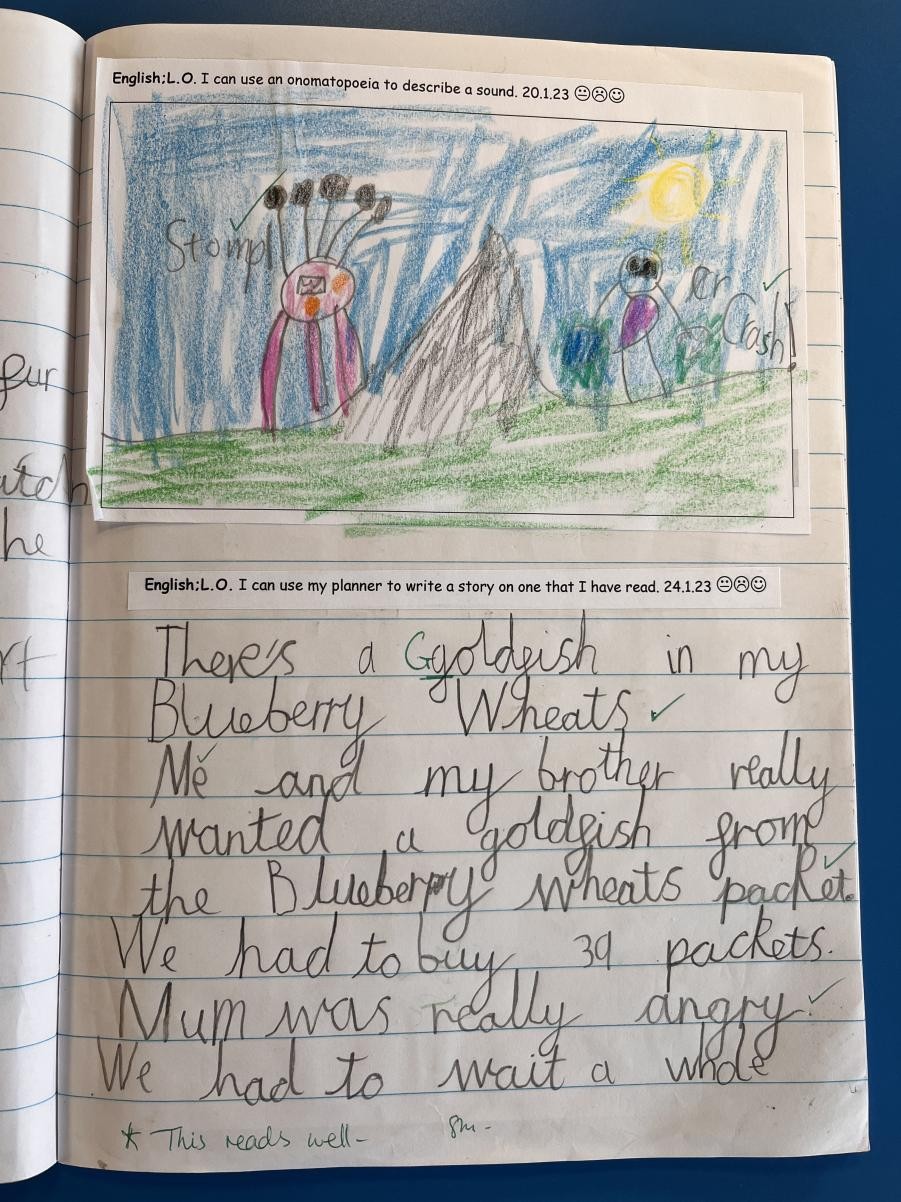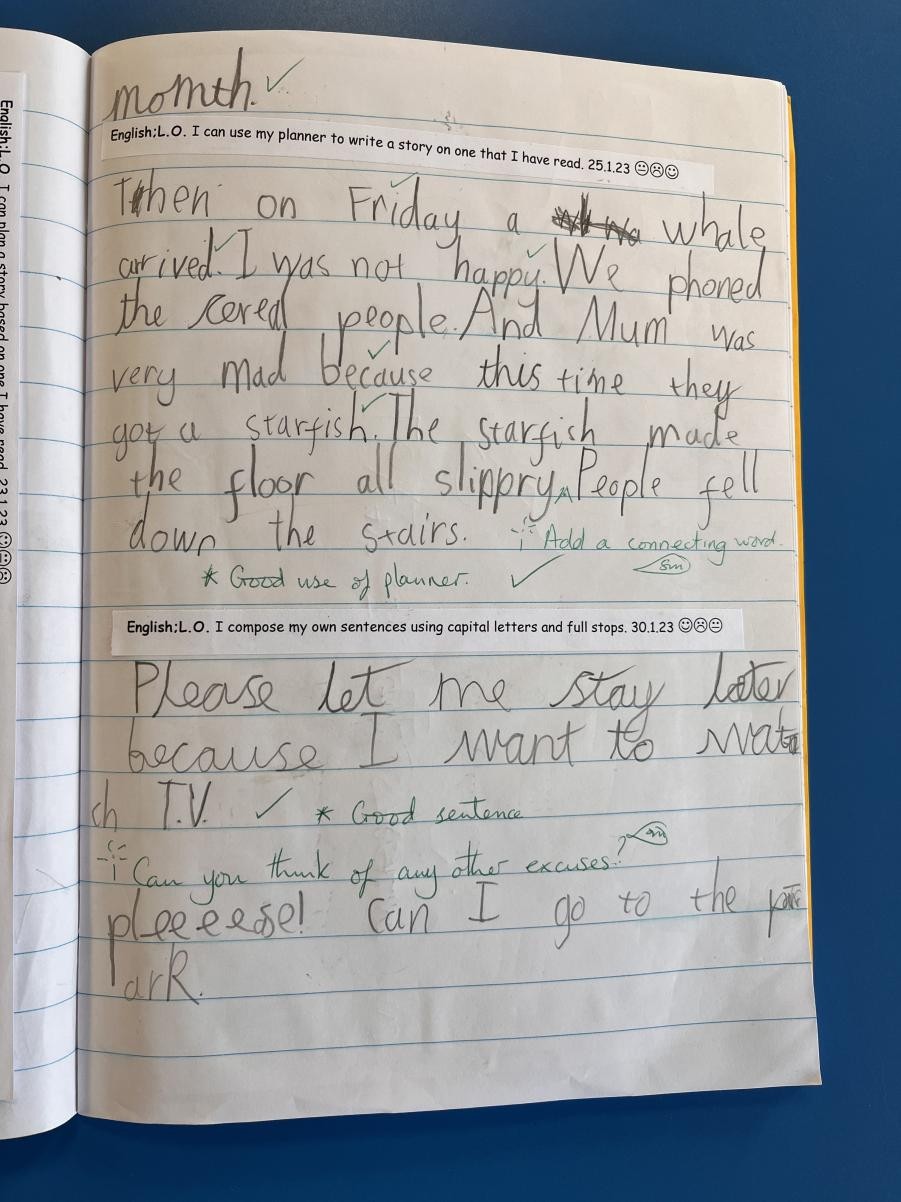Writing – Who For and Why? The Importance of Engagement and Purpose
At our school, we believe that a love of reading nurtured from an early age naturally feeds into a love of writing and confidence with the written word. From the very beginning, children are taught grammar and spelling, but most importantly, they are inspired to write with purpose and passion.
We engage pupils through high-quality class texts and encourage writing for a wide range of audiences and purposes — from labels and instructions to imaginative stories, persuasive letters, and thoughtful reports.
Oracy: Speaking and Listening as the Foundation of Writing
Clear communication begins with confident speaking. Children are encouraged to express themselves orally, rehearsing ideas, vocabulary, and explanations before transferring this fluency into writing. By talking through their thoughts, pupils learn to organise ideas, develop clarity, and build confidence in expressing themselves.
Oracy is central to our writing curriculum because:
-
It helps children rehearse language structures before committing them to paper
-
It builds confidence in sharing ideas with peers and adults
-
It strengthens vocabulary and sentence fluency, which directly supports written work
-
It ensures pupils can communicate effectively across all subjects and contexts
Through discussion, debate, role-play, and storytelling, children learn that speaking and listening are powerful tools for shaping their writing. This approach ensures that writing is not taught in isolation, but as part of a wider journey of communication and self-expression.
Experience First, Write Afterwards
We know that children write best when they draw upon real experiences. That’s why we prioritise opportunities both inside and outside the classroom — from woodland explorations to adventurous trips — so pupils can retell, reflect, and write with authenticity.
As part of the Jane Considine “Write Stuff” approach, each unit begins with carefully planned experience sessions. These sessions immerse children in rich, memorable activities that provide the stimulus for writing. Whether it’s drama, role-play, outdoor exploration, or hands-on investigation, these experiences ensure that pupils have something meaningful to write about. They build vocabulary, spark imagination, and give children the confidence to move from “I can tell you” to “I can write about it.”
By embedding experience sessions into every unit, we ensure that writing is purposeful, engaging, and rooted in lived experience. This approach not only strengthens technical skills but also fosters creativity, resilience, and a genuine love of writing.
Following the Jane Considine Scheme
We follow the Jane Considine “Write Stuff” approach, which provides a clear, structured framework for teaching writing. This scheme empowers children to:
-
Build vocabulary through “fantastic lenses” that encourage precise and ambitious word choices
-
Develop sentence structures using “grammaristics” to strengthen technical accuracy
-
Engage in “sentence stacking” lessons where ideas are modelled, rehearsed, and written collaboratively before pupils innovate independently
This approach ensures consistency across year groups, scaffolds progression, and helps children become confident, creative, and resilient writers.
Becoming an Editor
Proficient writing begins with motivation and engagement. Pupils analyse model texts, orally rehearse stories, and “magpie” effective phrases to use in their own work. Editing and redrafting are embedded as vital steps in the writing process, supported by:
-
Peer and self-marking
-
Genre ladders and editing stations
-
The Jane Considine editing process, which provides a clear framework for improving writing through structured stages of reflection and refinement. Children are taught to revisit their work systematically — focusing first on meaning and clarity, then on sentence structure, vocabulary choices, and finally on technical accuracy in grammar, spelling, and punctuation.
This approach ensures that editing is not seen as a final correction, but as an integral part of the writing journey. Pupils learn that redrafting strengthens their voice as writers, helping them to produce polished, purposeful pieces that they are proud to share.
Cross-Curricular Writing
Writing is woven throughout the curriculum, giving children authentic opportunities to apply their skills in meaningful contexts. We believe that writing should always have a clear purpose — whether to inform, persuade, entertain, or explain. When children understand why they are writing and who they are writing for, their motivation and engagement increase, and the quality of their work improves.
Purposeful writing helps pupils to:
-
Recognise the real-world value of their writing
-
Apply language structures they have rehearsed in authentic situations
-
Develop confidence in adapting tone and style for different audiences
-
See writing as a tool for communication, not just a classroom exercise
Examples include:
-
Newspaper reports on geographical events, giving children the chance to inform others about real issues
-
Instructional writing in Design and Technology, where pupils explain processes clearly for a practical audience
-
Reflective diaries and advice booklets during outdoor learning projects, encouraging children to share experiences and provide guidance for others
By embedding writing across subjects, we ensure that children understand its power and purpose. This approach nurtures not only technical skill but also the ability to use writing as a meaningful way of engaging with the world around them.
Grammar, Spelling, and Punctuation
Technical accuracy underpins effective writing, and we ensure children develop these skills through a structured and purposeful approach. Using the Jane Considine “Write Stuff” scheme, grammar, spelling, and punctuation are taught explicitly within the Initiate and Model phases of each unit:
-
Initiate Phase: Children are immersed in rich experiences and vocabulary exploration, which provides the foundation for accurate and ambitious writing. Grammar and spelling are introduced in context, so pupils understand how technical skills support meaning.
-
Model Phase: Teachers demonstrate high-quality writing, modelling sentence structures, punctuation choices, and spelling patterns. Pupils rehearse and adapt these models, applying technical accuracy to their own writing with confidence.
Alongside this, we use carefully chosen programmes to strengthen core skills:
-
Letter-Join: Supports handwriting, spelling, and grammar, ensuring children develop fluent, legible writing and secure knowledge of language conventions.
-
Little Wandle: Provides a systematic approach to phonics and initial spelling, giving younger pupils a strong foundation in decoding and encoding words.
By embedding grammar, spelling, and punctuation teaching within the Jane Considine framework, and reinforcing it through Letter-Join and Little Wandle, we ensure that children have the tools to express themselves with clarity, precision, and creativity.



